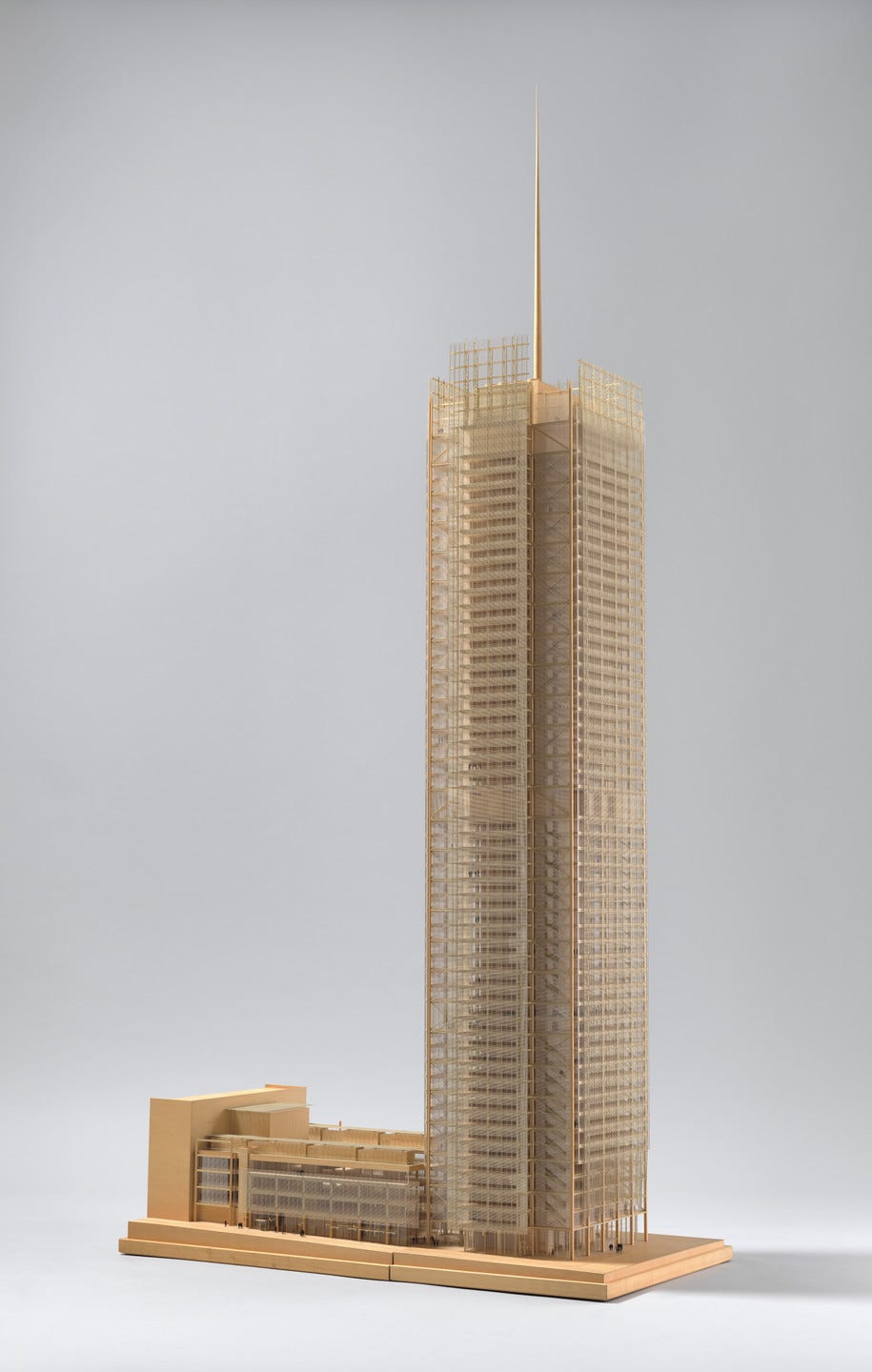Abstract Structures
From my collection, Points of Attack (Clash Books, 2020)
If architecture were not a form of public art, the question of whether it has become overly academic would be less pressing. Most contemporary gallery art, after all, is deeply academic, if not always by design, then certainly in the manner it is received by audiences, long since trained to treat art as the organon of philosophy. This too is problematic, inasmuch as most of this work is hardly up to the task. But then no one demands that the public visit these galleries; if they like, they can always stick to the classical collections.
Architecture, being planted firmly in public space, offers no such relief, which makes its character all of our concern, not just the connoisseurs’. So many interventions in public life, when they come to have an academic aspect, suffer from the problem of a little knowledge: the half-baked neuro-babble we’re subjected to (and speaking fluently) these days, with seemingly every aspect of human affairs receiving some quasi-evolutionary explanation, no matter how thin it stretches the core theory; or the economic metrics and findings we don’t genuinely understand but feel compelled to speak to anyway. How many, for instance, have a plausible claim to grasping Thomas Piketty’s research and the debate it stirred within the discipline of economics over wealth inequality (a debate that is not nearly as new as we suppose)?
We can ask, in this same spirit, how ideas born in certain quarters of the academy end up getting mangled in others (architecture departments), which in turn mangle public space. As with much recent gallery art, the appreciation of many newer buildings depends essentially on having a theoretical framework at hand to make sense of them. Without one, they can be alienating to look upon or walk through, to live in or work at. Consider all the edifices of previous generations in the International Style that remain, for many, a form of urban blight not stemming from the usual causes of poverty or neglect, but from the indulgence of philosophical ideas over appearances.
I myself worked for years in a Renzo Piano building in Manhattan that always left me cold and distanced, and this while having some sense for the deeper architectural aspirations of the age. There was, to begin with, far too much glass everywhere, glass where none was called for. Everything ran together. Months after I began working there, I asked a long-tenured colleague about it and was given to understand it was all simply a matter of transparency; the thought was built right into the place. Later I was to find him a true team player, a believer in what you might call compassionate surveillance. This notion, which I found it plausible to think the building embodied, regardless of Piano’s intentions, didn’t in fact raise my estimation of the building, even as it made it more intelligible. The intellectual values of clarity and directness had been turned, at this site, to foul ends, either by a theoretical mishandling (always possible) or, less generously, by design, marshaling philosophical talk hostile to solidity and presence, that urged instead for total penetrability by sight—which might suggest a total lack of obstacles—as a pretext for more sinister, labor-disciplining intentions.
The tower also had curious meshes floating above each of its faces, so whenever you looked at it from the street, you felt as if you were only half-seeing it, the way one does the entrance to a house through a screen door. There were green reasons for these screens—I could see this without being told or even grasping exactly what they did. This is how theory is lost in reception, without actually getting out of the way. Since most recent showpiece constructions of note had not opted for these unsightly shields that seemed to have been added on like overegged accessories, I could only assume there were ways of achieving environmentally sound results that didn’t require them. Probably there was a tortuous aesthetic justification for the veil: something, I expect, about frustrating the urban gaze, never mind all the glass within.
More recently I have heard the building referred to as lesser Piano. I understand this.


